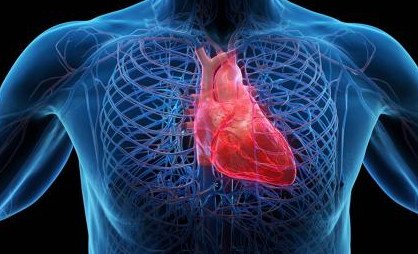Журнал "Медицинский совет" №21/2019
DOI: 10.21518/2079-701X-2019-21-58-64
И.А. Либов, e-mail: igor.libov@mail.ru
И.М. Майоров, e-mail: swimmajor@mail.ru
Л.П. Порунова, e-mail: lporunova@yandex.ru
Городская клиническая больница имени С.П. Боткина; 125284, Россия, Москва, 2-й Боткинский пр-д, д. 5
В статье обсуждаются вопросы, касающиеся лечения больных c персистирующей формой фибрилляции предсердий (ФП), анализируются показания к выполнению, при отсутствии эффекта от медикаментозного лечения, радиочастотной катетерной абляции (РЧА) устьев легочных вен и электрических спиральных волн в предсердиях или роторов, клинические эффекты этой процедуры, оценивается вклад фокусной активности в поддержание персистирующей ФП. Обсуждается вопрос влияния сопутствующей патологии и анатомо-морфологических особенностей сердца на ранние и отдаленные результаты РЧА у пациентов с персистирующей формой ФП.
Успех и эффективность хирургического лечения ФП зависят не только от метода и технологии выбранной процедуры, но и от факторов риска рецидива ФП (так называемых предикторов). Радиочастотная абляция, являясь инвазивным хирургическим вмешательством, имеет свой спектр возможных осложнений и высокую экономическую составляющую, что предопределяет необходимость прогнозирования эффективности процедуры, то есть дооперационного определения той группы пациентов, у которых данный вид лечения окажется оправданным, а предполагаемые эффективность и безопасность – выше вероятности осложнений. Изучение этой проблемы и разработка критериев отбора пациентов с ФП позволит с высокой вероятностью предсказывать эффективность оперативного вмешательства, что, в свою очередь, будет способствовать правильному выбору стратегии.
Для цитирования: Либов И.А., Майоров И.М., Порунова Л.П. Современные аспекты хирургического лечения больных с фибрилляцией предсердий. Разработка единых критериев для отбора пациентов на проведение радиочастотной абляции. Медицинский совет. 2019;(21):58-64. doi: 10.21518/2079-701X-2019-21-58-64.
Конфликт интересов: авторы заявляют об отсутствии конфликта интересов.
Modern aspects of surgical treatment of patients with atrial fibrillation. Development of uniform criteria for selecting patients for radiofrequency ablation
Igor’ A. Libov, e-mail: igor.libov@mail.ru
Igor’ M. Mayorov, e-mail: swimmajor@mail.ru
Lyudmila P. Porunova, e-mail: lporunova@yandex.ru
City Clinical Hospital named after S.P. Botkin; 5, 2nd Botkinsky Passage, Moscow, 125284, Russia
The article discusses the issues concerning the treatment of patients with the atrial fibrillation (AF), analyzes the indications for execution, in the absence of the effect of medication treatment, radiofrequency catheter ablation (RFA) of the lung vein entries and electrical spiral waves in the atria or rotors, the clinical effects of this procedure, assesses the contribution of focal activity in maintaining the persistent AF. The influence of concomitant pathology and anatomical-morphological peculiarities of the heart on early and distant RFA results in patients with persistent AF is discussed.
The success and efficacy of AF surgical treatment depends not only on the method and technology of the chosen procedure, but also on the risk factors for the recurrence of AF (so-called predictors). Radio-frequency ablation, being an invasive surgery, has its own spectrum of possible complications and high economic component, which predetermines the necessity to predict the efficiency of the procedure, i.e. preoperative determination of the patient group, in which this type of treatment will be justified, and the expected efficiency and safety – higher than the probability of complications. The study of this problem and the development of criteria for selecting patients with AF will allow predicting the effectiveness of surgical intervention with high probability, which in turn will contribute to the correct strategy selection.
For quotation: Libov I.A., Mayorov I.M., Porunova L.P. Modern aspects of surgical treatment of patients with atrial fibrillation. Development of uniform criteria for selection of patients for radiofrequency ablation. Meditsinskiy sovet = Medical Council. 2019;(21):58-64. (In Russ.) doi: 10.21518/2079-701X-2019-21-58-64.
Conflict of interest: the authors declare no conflict of interest.
Загрузить файл в формате PDF
Список литературы / References
- Revishvili A.Sh., Nardaya S.G., Rzayev F.G., Mustapaeva Z.V., Kotanova E.S. Electrophysiological and clinical predictors of effectiveness of radiofrequency ablation inthe pulmonary veins and left atrium in patients with persistent form of atrial fibrilla tion. Annaly aritmologii = Annals of arrhythmology. 2014;11(1):46-53. (In Russ.) Available at: https://cyberleninka.ru/article/n/elektrofiziologicheskie-i-klinicheskie-prediktory-effektivnosti-radiochastotnoy-ablatsii-legochnyh-ven-i-levogo-predserdiya-u.
- Colilla S., Crow A., Petkun W., Singer D.E., Simon T., Liu X. Estimates of current and future incidence and prevalence of atrial fibrillation in the U.S. adult population. Am J Cardiol. 2013;112(8):1142–1147. doi: 10.1016/j.amjcard.2013.05.063.
- Shukla A., Curtis A.B. Avoiding permanent atrial fibrillation: treatment approaches to prevent disease progression. Vasc Health Risk Manag. 2014;10:1-12. doi: 10.2147/VHRM.S49334.
- Camm A.J., Lip G.Y., De Caterina R. et al. 2012 focused update of the ESC Guidelines for management of atrial fibrillation: An update of the ESC Guidelines for the management of atrial fibrillation. Eur Heart J. 2013;34(36):2850-2851. doi: 10.1093/eurheartj/eht291.
- Morillo C.A., Verma A., Conolly S.J. et al. Radiofrequency ablation vs antirrhytmicdrugs as first-line treatment of paroxismal atrial fibrillation (RAAFT-2). A Randomized trial. JAMA. 2014;311(7):692-700. doi: 10.1001/jama.2014.467.
- Krijthe B.P., Kunst A., Benjamin E.J., Lip G.Y., Franco O.H., Hofman A., Witteman J.C., Stricker B.H., Heeringa J. Projections on the number of individuals with atrial fibrillation in the European Union, from 2000 to 2060. Eur Heart J. 2013;34(35):2746–2751. doi: 10.1093/eurheartj/eht280.
- Zoni-Berisso M., Lercari F., Carazza T., Domenicucci S. Epidemiology of atrial fibrillation: European perspective. Clin Epidemiol. 2014;6:213–220. doi: 10.2147/CLEP.S47385.
- Bjorck S., Palaszewski B., Friberg L., Bergfeldt L. Atrial fibrillation, stroke risk, and warfarin therapy revisited: a population-based study. Stroke. 2013;44(11):3103–3108. doi: 10.1161/STROKEAHA.113.002329.
- Haim M., Hoshen M., Reges O., Rabi Y., Balicer R., Leibowitz M. Prospective national study of the prevalence, incidence, management and outcome of a large contemporary cohort of patients with incident non-valvular atrial fibrillation. J Am Heart Assoc. 2015;21;4(1):e001486. doi: 10.1161/JAHA.114.001486.
- McManus D.D., Rienstra M., Benjamin E.J. An update on the prognosis of patients with atrial fibrillation. Circulation. 2012;126(10):e143–146. doi: 10.1161/CIRCULATIONAHA.112.129759.
- Ball J., Carrington M.J., McMurray J.J., Stewart S. Atrial fibrillation: profile and burden of an evolving epidemic in the 21st century. Int J Cardiol. 2013;167(5):1807–1824. doi: 10.1016/j.ijcard.2012.12.093.
- Kannel W.B., Wolf P.A., Benjamin E.J., Levy D. Prevalence, incidence, prognosis, and predisposing conditions for atrial fibrillation: population-based estimates. Am J Cardiol. 1998;82(8А):2N–9N. doi: 10.1016/s0002-9149(98)00583-9.
- Nguyen T.N., Hilmer S.N., Cumming R.G. Review of epidemiology and management of atrial fibrillation in developing countries. Int J Cardiol. 2013;167(6):2412–2420. doi: 10.1016/j.ijcard.2013.01.184.
- Oldgren J., Healey J.S., Ezekowitz M., Commerford P., Avezum A., Pais P., et al.; RE-LY Atrial Fibrillation Registry Investigators. Variations in cause and management of atrial fibrillation in a prospective registry of 15,400 emergency department patients in 46 countries: the RE-LY Atrial Fibrillation Registry. Circulation. 2014;129(15):1568–1576. doi: 10.1161/CIRCULATIONAHA.113.005451.
- Chiang C.E., Naditch-Brule L., Murin J., Goethals M., Inoue H., O’Neill J., et al. Distribution and risk profile of paroxysmal, persistent, and permanent atrial fibrillation in routine clinical practice: insight from the reallife global survey evaluating patientswith atrial fibrillation international registry. Circ Arrhythm Electrophysiol. 2012;5(4):632–639. doi: 10.1161/CIRCEP.112.970749.
- Wang T.J., Larson M.G., Levy D., Vasan R.S., Leip E.P., Wolf P.A., et al. Temporal relations of atrial fibrillation and congestive heart failureand their joint influence on mortality: the Framingham Heart Study. Circulation. 2003;107(23):2920–25. doi: 10.1161/01.CIR.0000072767.89944.6E.
- Kishore A., Vail A., Majid A., Dawson J., Lees K.R., Tyrrell P.J., Smith C.J. Detection of atrial fibrillation after ischemic stroke or transient ischemic attack: a systematic review and meta-analysis. Stroke. 2014;45(2):520–526. doi: 10.1161/STROKEAHA.113.003433.
- Sanna T., Diener H.C., Passman R.S., Di Lazzaro V., Bernstein R.A., Morillo C.A., et al.; CRYSTAL AF Investigators. Cryptogenic stroke and underlying atrial fibrillation. N Engl J Med. 2014;370(26):2478–86. doi: 10.1056/NEJMoa1313600.
- Schnabel R.B., Yin X., Gona P., Larson M.G., Beiser A.S., McManus D.D., et al D. 50 year trends in atrial fibrillation prevalence, incidence, risk factors, and mortality in the Framingham Heart Study: a cohort study. Lancet. 2015;386(9989):154–162. doi: 10.1016/S0140-6736(14)61774-8.
- Steinberg J.S., Shah Y., Bhatt A. et al. Focal impulse and rotor modulation: actual procedural observations and extended clinical follow-up. Heart Rhythm. 2017;14(2):192-197. doi: 10.1016/j.hrthm.2016.11.008.
- Motoki H., Negishi K., Kusunose K. et al. Global Left Atrial Strain in the Prediction of Sinus Rhytm Maintaince after Catheter Ablation for Atrial Fibrillation. J Am Soc Echocardiogr. 2014;27(11):1184-1192. doi: 10.1016/j.echo.2014.08.017.
- Hu X., Wang Q., Sun J. et al. Association between CHADS2 score and long-term atrial fibrillation recurrence rate after catheter ablation. Zhongua Xin Xue Guan Bing Za Zhi. 2014;42(5):379-383. doi: 10.3760/cma.j.issn.0253-3758.2014.05.006.
- Кim M-N., Lee J.J., Kim S-A. et al. The difference of predictors for recurrence after catheter ablation of non-paroxismal atrial fibrillation according to follow-up period. Int. Heart J. 2014;55(4):312-318. doi: 10.1536/ihj.13-370.
- Takigava M., Takahashi A., Kuwahara T. et al. Long-term follow-up after catheter ablationof paroxysmal atrial fibrillation: the incidence of reccurence and progression of atrial fibrillation. Circ Arrythm Electrophysiol. 2014;7(2):267-273. doi: 10.1161/CIRCEP.113.000471.
- Ардашев А.В., Желяков Е.Г., Конев А.В. и соавт. Отдаленные результаты радиочастотной катетерной абляции у больных с фибрилляцией предсердий и прогноз рецидивов. Российские медицинские вести. 2013;18(4):18-25. Режим доступа: https://elibrary.ru/item.asp?id=20804247. / Ardashev A.V., Zhelyakov Ye.G., Konev A.V. et al. Long-term results of radio-frequency catheter ablation at atrial fibrillation and prognosis of relapses. Russian m-vesti. 2013;18(4):18-25. (In Russ.) Available at: https://elibrary.ru/item.asp?id=20804247.
- Camm J., Lip G.Y.H., De Caterina R. et al. 2012 focused update of the ESC Guideline for the management of atrial fibrillation. Eur. Heart J. 2012;33(21):2719-2747. doi: 10.1093/eurheartj/ehs253.
- Chugh S.S., Havmoeller R., Narayanan K. et al. Worldwide Epidemiology of Atrial Fibrillation: A Global Burden of Disease 2010 Study. Circulation. 2014;129(8):837–847. doi: 10.1161/CIRCULATIONAHA.113.005119.
- Davis R.C., Hobbs F.D., Kenkre J.E. et al. Prevalence of atrial fibrillation in the general population and in high-risk groups: the ECHOES study. Europace. 2012;14(11):1553–1559. doi: 10.1093/europace/eus087.
- Miyasaka Y., Barnes M.E., Gersh B.J. et al. Secular trends in incidence of atrial fibrillation in Olmsted County, Minnesota, 1980 to 2000, and implications on the projections for future prevalence. Circulation. 2006;114(2):119–125. doi: 10.1161/CIRCULATIONAHA.105.595140.
- Olsson L.G., Swedberg K., Lappas G. et al. Trends in mortality after first hospitalization with atrial fibrillation diagnosis in Sweden 1987 to 2006. Int J Cardiol. 2013;170(1):75–80. doi: 10.1016/j.ijcard.2013.10.028.
- Angaran P., Dorian P. Antiarrhythmic drugs in atrial fibrillation: do they have a future? Can J Cardiol. 2013;29(10):1158–1164. doi: doi: 10.1016/j.cjca.2013.04.033.
- Corley S.D., Epstein A.E., DiMarco J.P. et al. AFFIRM Investigators. Relationships between sinus rhythm, treatment, and survival in the Atrial Fibrillation Follow-Up Investigation of Rhythm Management (AFFIRM) Study. Circulation. 2004;109(12):1509–1513. doi: doi: 10.1161/01.CIR.0000121736.16643.11.
- Voigt N., Heijman J., Wang Q. et al. Cellular and Molecular Mechanisms of Atrial Arrhythmogenesis in Patients With Paroxysmal Atrial Fibrillation. Circulation. 2014;129(2):145–156. doi: doi: 10.1161/CIRCULATIONAHA.113.006641.
- Andrade J., Khairy P., Dobrev D., Nattel S. The clinical profile and pathophysiology of atrial fibrillation: relationships among clinical features, epidemiology, and mechanisms. Circ Res. 2014;114:1453–1468. doi: doi: 10.1161/CIRCRESAHA.114.303211.
- Haissaguerre M. et al. Spontaneous initiation of atrial fibrillation by ectopic beats originating in the pulmonary veins. N. Engl. J. Med. 1998;339:659-666. doi: doi: 10.1056/NEJM199809033391003.
- Haissaguerre M. et al. Electrophysiological end point for catheter ablation of atrial fibrillation initiated from multiple pulmonary vein foci. Circulation. 2000;101(12):1409-1417. doi: doi: 10.1161/01.cir.101.12.1409.
- Pappone C., Augello G., Sala S. et al. A randomized trial of circumferential pulmonaryvein ablation versus antiarrhythmic drug therapy in paroxysmal atrial fibrillation: the APAF Study. J Am Coll Cardiol. 2006;48(11):2340-2347. doi: doi: 10.1016/j.jacc.2006.08.037.
- Heijman J., Voigt N., Nattel S., Dobrev D. Cellular and molecular electrophysiology of atrial fibrillation initiation, maintenance, and progression. Circ Res. 2014;114(9):1483–1499. doi: doi: 10.1161/CIRCRESAHA.114.302226.
- Сулимов В.А., Голицын С.П., Панченко Е.П., Попов С.В., Ревишвили А.Ш., Шубик Ю.В., Явелов И.С.; Экспертный совет. Диагностика и лечение фибрилляции предсердий. Рекомендации РКО, ВНОА и АССХ. 2012. Режим доступа: https://scardio.ru/content/ Guidelines/Rekomendations_fibrillyacia_ predserdii_2012.pdf. / Sulimov V.A., Golitsyn S.P., Panchenko E.P., Popov S.V., Revishvili A.SH., SHubik YU.V., YAvelov I.S.; Expert Council. Diagnosis and treatment of atrial fibrillation. Guidelines RKO, VNOA and ASSKH. 2012. (In Russ.) Availableat: https://scardio.ru/content/ Guidelines/Rekomendations_fibrillyacia_ predserdii_2012.pdf.
- Camm A.J., Kirchhof P., Lip G.Y. et al. Guidelines for the management of atrial fibrillation: The Task Force for the Management of Atrial Fibrillation of the European Society of Cardiology. Eur Heart J. 2010;31(19):2369–429. doi: doi: 10.1093/eurheartj/ehq278.
- Hohnloser S.H., Pajitnev D., Pogue J. et al.; ACTIVE W Investigators. Incidence of stroke in paroxysmal versus sustained atrial fibrillation in patients taking oral anticoagulation or combined antiplatelet therapy: an ACTIVE W Substudy. J Am Coll Cardiol. 2007;50(22):2156–61. doi: doi: 10.1016/j.jacc.2007.07.076.
- Al-Khatib S.M., Thomas L., Wallentin L. et al. Outcomes of apixaban vs. warfarin by type and duration of atrial fibrillation: results from the ARISTOTLE trial. Eur Heart J. 2013;34:2464-2471. Available at: https://scholars.duke.edu/display/pub938253
- Imai K., Okura H., Tamada T. et al. Prediction of congestive heart failure in patients with non valvular atrial fibrillation. Intern Med. 2014;53(1):7–12. doi: doi: 10.2169/internalmedicine.53.0962.
- Guglin M., Chen R. How much atrial fibrillation causes symptoms of heart failure? Int J Clin Pract. 2014;68(4):453–457. doi: doi: 10.1111/ijcp.12262.
- Taillandier S., Brunet Bernard A., Lallemand B. et al. Prognosis in patients hospitalized with permanent and nonpermanent atrial fibrillation in heart failure. Am J Cardiol. 2014;113(7):1189–1195. doi: doi: 10.1016/j.amjcard.2013.12.024.
- De Vos C.B., Pisters R., Nieuwlaat R. et al. Progression from paroxysmal to persistent atrial fibrillation clinical correlates and prog- nosis. J Am Coll Cardiol. 2010;55(8):725–731. doi: doi: 10.1016/j.jacc.2009.11.040.
- Jalife J. Mechanisms of persistent atrial fibrillation. Curr Opin Cardiol. 2014;29(1):20–27. doi: doi: 10.1097/HCO.0000000000000027.
- Kottkamp H. Human atrial fibrillation substrate: towards a specific fibrotic atrial cardiomyopathy. Eur Heart J. 2013;34(35):2731–2738. doi: doi: 10.1093/eurheartj/eht194.
- Savelieva I., Kakouros N., Kourliouros A., Camm A.J. Upstream therapies for management of atrial fibrillation: review of clinical evidence and implications for European Society of Cardiology guidelines. Part I: primary prevention. Europace. 2011;13(3):308–328. doi: doi: 10.1093/europace/eur002.
- Savelieva I., Kakouros N., Kourliouros A., Camm A.J. Upstream therapies for management of atrial fibrillation: review of clinical evidence and implications for European Society of Cardiology guidelines. Part II: secondary prevention. Europace. 2011;13(5):610–625. doi: doi: 10.1093/europace/eur023.
- Apostolakis S., Sullivan R.M., Olshansky B., Lip G.Y. Left ventricular geometry and outcomesin patients with atrial fibrillation: The AFFIRM Trial. Int J Cardiol. 2014;170(3):303–308. doi: doi: 10.1016/j.ijcard.2013.11.002.
- Shah N., Badheka A.O., Grover P.M. et al. Influence of left ventricular remodeling on atrial fibrillation recurrence and cardiovascular hospitalizations in patients undergoing rhythmcontrol therapy. Int J Cardiol. 2014;174(2):288–92. doi: doi: 10.1016/j.ijcard.2014.04.011.
- Chung R., Houghtaling P.L., Tchou M. et al. Left Ventricular Hypertrophy and Antiarrhythmic Drugs in Atrial Fibrillation: Impact on Mortality. Pacing Clin Electrophysiol. 2014;37(10):1338- 1348. doi: doi: 10.1111/pace.12426.
- Camm A.J., Lip G.Y., De Caterina R. et al. 2012 focused update of the ESC Guidelines for the management of atrial fibrillation: an update of the 2010 ESC Guidelines for the management of atrial fibrillation – developed with the special contribution of the European Heart Rhythm Association. Eur Heart J. 2012;33(21):2719–2747. doi: doi: 10.1093/eurheartj/ehs253.
- Nieuwlaat R., Prins M.H., Le Heuzey J.Y. et al. Prognosis, disease progression, and treatment of atrial fibrillation patients during 1 year: follow-up of the Euro Heart Survey on atrial fibrillation. Eur Heart J. 2008;29(9):1181–1189. doi: doi: 10.1093/eurheartj/ehn139.
- Yamashita T., Inoue H., Okumura K. et al. Randomized trial of angiotensin II-receptor blocker vs dihydropiridine calcium channel blocker in the treatment of paroxysmal atrial fibrillation with hypertension (J-RHYTHM II study). Europace. 2011;13(4):473–479. doi: doi: 10.1093/europace/euq439.
- Tsang T.S., Barnes M.E., Miyasaka Y. et al. Obesity as a risk factor for the progression of paroxysmal to permanent atrial fibrillation: a longitudinal cohort study of 21 years. Eur Heart J. 2008;29(18):2227–2233. doi: doi: 10.1093/eurheartj/ehn324.
- Von Eisenhart Rothe A.F., Goette A., Kirchhof P. et al. Depression in paroxysmal and persistent atrial fibrillation patients: a cross-sectional comparison of patients enroled in two large clinical trials. Europace. 2014;16(8):812–819. doi: doi: 10.1093/europace/eut361.
- Hagens V.E., Van Veldhuisen D.J., Kamp O. et al. Effect of rate and rhythm control on left ventricular function and cardiac dimensions in patients with persistent atrial fibrillation: results from the RAte Control versus Electrical Cardioversion for Persistent Atrial Fibrillation (RACE) study. Heart Rhythm. 2005;2(1):19–24. doi: doi: 10.1016/j.hrthm.2004.09.028.
- De Vos C.B., Breithardt G., Camm A.J. et al. Progression of atrial fibrillation in the Registry on Cardiac rhythm disORDers assessing the control of Atrial Fibrillation cohort: clinical correlates and the effect of rhythmcontrol therapy. Am Heart J. 2012;163(5):887–893. doi: doi: 10.1016/j.ahj.2012.02.015.
- Whitbeck M.G., Charnigo R.J., Shah J. et al.; the AFFIRM investigators. QRS duration predicts death and hospitalization among patients with atrial fibrillation irrespective of heart failure: evidence from the AFFIRM study. Europace. 2014;16(6):803–811. doi: doi: 10.1093/europace/eut335.
- Канорский С.Г. Современная медикаментозная терапия фибрилляции предсердий: выбор тактики, антиаритмических препаратов и схем лечения. Кардиология. 2012;52(9):58–63. Режим доступа: https://www.ncbi.nlm.nih.gov/pubmed/23098547. / Kanorskii S.G. Modern drug therapy of atrial fibrillation: selection of treatment strategy, antiarrhythmic preparations, and schemes of treatment. Kardiologiia. 2012;52(9):58–63. (In Russ.) Available at: https://www.ncbi.nlm.nih.gov/pubmed/23098547.
- Kirchhof P., Ammentorp B., Darius H. et al. Management of atrial fibrillation in seven European countries after the publication of the 2010 ESC Guidelines on atrial fibrillation: primary results of the PREvention oF thromboemolic events–European Registry in Atrial Fibrillation (PREFER in AF). Europace. 2014;16(1):6–14. doi: doi: 10.1093/europace/eut263.
- Lip G.Y., Laroche C., Dan G.A. et al. A prospective survey in European Society of Cardiology member countries of atrial fibrillation man- agement: baseline results of EuroObservational Research Programme Atrial Fibrillation (EORP-AF) Pilot General Registry. Europace. 2014;16(2):308–19. doi: doi: 10.1093/europace/eut373.
- Steinberg B.A., Holmes D.N., Ezekowitz M.D. et al. Rate versus rhythm control for management of atrial fibrillation in clinical practice: results from the Outcomes Registry for Better Informed Treatment of Atrial Fibrillation (ORBIT-AF) registry. Am Heart J. 2013;165(4):622–629. doi: doi: 10.1016/j.ahj.2012.12.019.








